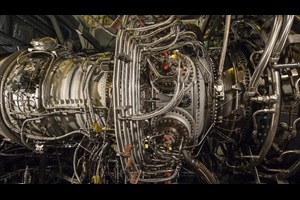- SEPA
- Utility Transformations
- Utility Transformations
- Demand Response
- FERC
National Town Meeting on Demand Response Confronts Key Industry Issues

The event kicked off with a greeting from Julia Hamm, the president of SEPA, who expressed her excitement at being involved. She moderated a panel of industry experts on SEPA’s 51st State Initiative, which is intended to envision an ideal state regulatory and market structure for clean energy starting from a clean slate. That session was followed by an intimate discussion with Phil Moeller, former commissioner at the Federal Energy Regulatory Commission (FERC) and current senior vice president at the Edison Electric Institute. Phil opined on many industry issues, including the FERC Order 745 saga, about which he said that FERC jurisdiction was just a distraction from the more relevant concern about DR compensation levels.
Changing Utility Landscape
Next, a group of state public utility commissioners (PUCs) from across the country provided thoughts on the changing landscape in the energy industry and what it means for regulators. Willie Phillips, Commissioner on the Washington, D.C. PUC, noted three P’s that should be the focus: policy, prices, and people. He also commented that industry restructuring promotes competition and competition promotes innovation. Utility executives had an opportunity to respond on their own panel and talk about new business models and revenue drivers. Paul Lau, Chief Grid Strategy Officer for the Sacramento Municipal Utility District (SMUD), highlighted that SMUD’s peak load occurred 10 years ago and has been flat or declining since then, a trend that is affecting many utilities.
The second day of the conference was broken into three distinct tracks reflecting the diversity and broad scope that DR and smart grid are touching upon. The Grid Integration track covered technology trends such as distributed energy resource management systems, solar and storage partnerships, microgrids, automated DR, and electric vehicle integration. The Emerging Models and Markets track included panels on time varying rates, cost-benefit analysis for grid modernization, policy and regulatory evolution, the future of regional transmission organization markets, and distribution planning tools. Finally, the Consumer Engagement track looked at modernizing communications and outreach, advanced customer engagement, consumer-driven technology adoption, data analytics for customer engagement, and innovative commercial and industrial DR programs.
The breadth of this year’s National Town Meeting represents the growing importance and integration of all types of resources on the electric grid. By the time of the 2017 meeting, we might have entirely new terminology to describe these trends on a system level, rather than talking about individual technologies and policies.